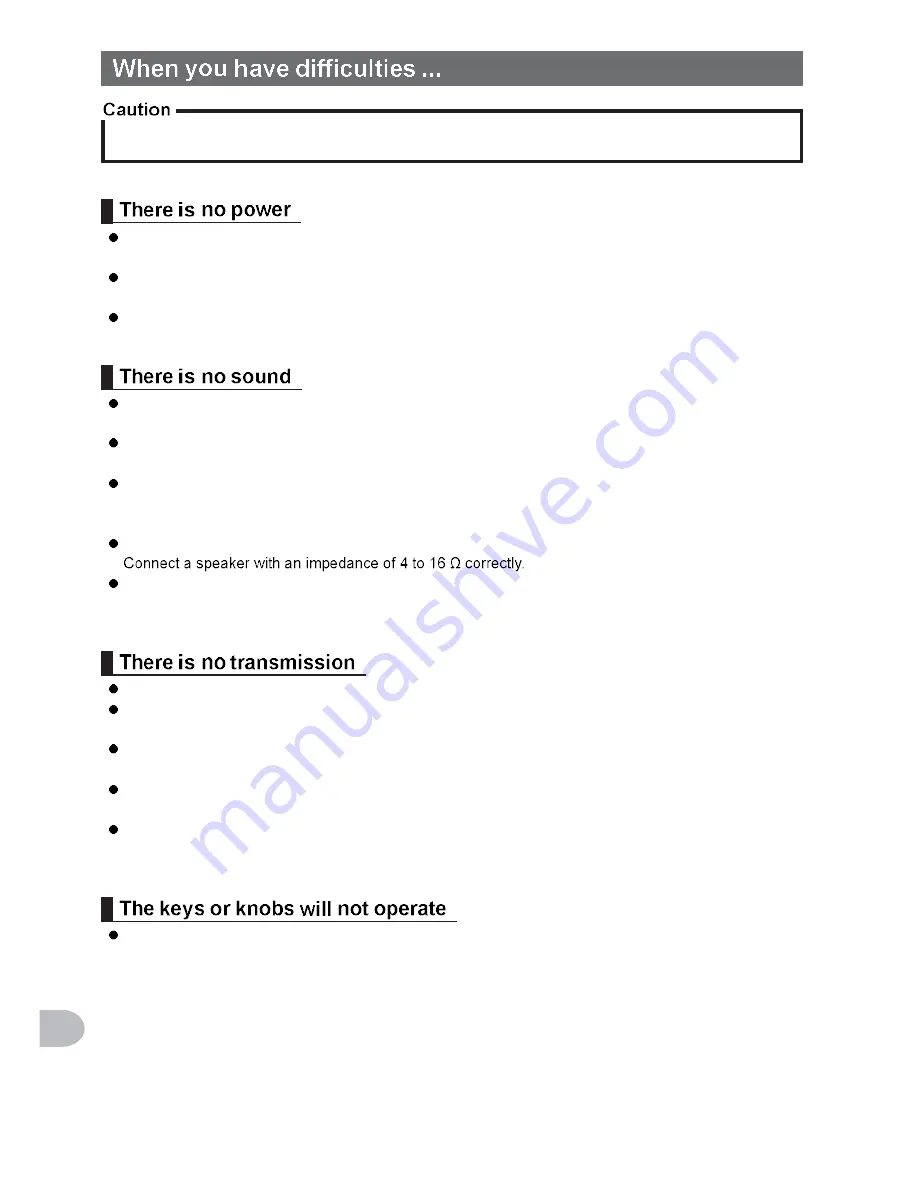
208
A
p
p
e
n
d
ix
Check the following before requesting for repair services.
Is the external power supply connected correctly?
Connect the black wire to the negative (-) terminal and the red wire to the positive (+) terminal.
Is the voltage and current capacity of the external power supply sufficient?
Check the voltage (13.8 V) and current capacity (20 A or above) of the external power supply.
Is the fuse broken?
Replace the fuse.
Is the squelch level or setting too high?
Adjust the squelch level when receiving weak signals.
Is the volume low?
Increase the volume by turning the VOL knob in a clockwise direction.
Is the tone squelch or DCS turned on?
When the tone squelch or DCS is turned on, no sound will be heard until signals containing the same
tone frequency, or DCS code that have been set are received.
Is the external speaker connected?
Is the Bluetooth headset in use?
Disable the use of the headset or use the set-up menu to allow sound to come from both the headset
and the main body speaker.
Is the PTT switch pressed properly?
Is the microphone connected correctly?
Plug the connector all the way into the MIC jack.
Is the transmission frequency set to the amateur band?
Transmission outside the amateur band is not possible.
Is the antenna or co-axial cable broken?
Replace the antenna or co-axial cable.
Is the voltage of the external power supply normal?
When the voltage of the power supply drops during transmit, the transceiver may not work properly.
Use a stable DC power supply with a voltage of 13.8 V and a current capacity of 20 A.
Is the lock function activated?
Cancel the lock by pressing the POWER / LOCK key.












































